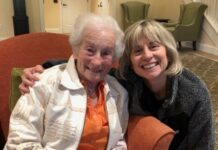By Micha Shalev
One occasionally reads of sensationalized newspaper stories of elderly Alzheimer’s and dementia victims who were subjected to abuse or neglect while they were residents in a nursing home.
 Based on such newspaper accounts, one would have the impression that most cases take place in such facilities. While these kind of incidents do take place in such facilities, they are not the norm. Recent studies show that most cases of this type of abuse happen in a family home setting by family members or paid caregivers.
Based on such newspaper accounts, one would have the impression that most cases take place in such facilities. While these kind of incidents do take place in such facilities, they are not the norm. Recent studies show that most cases of this type of abuse happen in a family home setting by family members or paid caregivers.
Some potential indicators for each type of elder abuse include:
•Passive and active neglect — Evidence that personal care is lacking or neglected; signs of malnourishment; chronic health problems both physical and/or psychiatric; dehydration and pressure (bed) sores.
•Physical abuse — overt signs of physical trauma; signs of restraint trauma injury; additional physical indicators such as hypothermia, abnormal chemistry values or pain upon being touched; repeated unexplained injuries; inconsistent explanations of the injuries; a physical examination reveals that the older person has injuries which the caregiver has failed to disclose; a history of doctor or emergency room “shopping” and repeated time lags between the time of any injury or fall and medical treatment.
•Material or financial abuse — unusual banking activity; bank statements no longer come to the older adult; documents are being drawn up for the elder to sign but the elder can’t explain or understand the purpose of the papers; the elder’s living situation is not commensurate with the size of the elder’s estate; the caregiver only expresses concern regarding the financial status of the older person and does not ask questions or express concern regarding the physical and/or mental health status of the elder; personal belongings such as jewelry, art and furs are missing; signatures on checks and other documents do not match the signature of the older person; recent acquaintances, housekeepers or care providers declare undying affection for the older person and isolate the elder from long-term friends or family or they make promises of lifelong care in exchange for deeding all property and/or assigning all assets over to the acquaintance or caregiver.
•Psychological abuse — Look for psychological signs such as ambivalence, deference, passivity, shame, anxiety, depression, hopelessness, helplessness, thoughts of suicide, confusion or disorientation. Behavioral signs include trembling, clinging, cowering, lack of eye contact, evasiveness, agitation or hyper vigilance.
•Sexual abuse — trauma to the genital area, venereal disease, infections and/or unusual discharge or smell.
•Violation of basic rights — The caregiver withholds or reads the elder’s mail; intentionally obstructs the older person’s religious observances; or has removed all doors from the older adult’s rooms.
•Self neglect — Is a controversial category in relation to elder abuse. The following questions lie at the heart of the controversy. If an individual is competent but chooses to neglect their personal health or safety, is this abuse? Is intervention, particularly involuntary intervention, appropriate in cases of self-neglect?
Self-neglect represents the highest percentage of cases of elder abuse. In fact, the Public Policy Institute of AARP estimates that self-neglect represents 40 to 50 percent of cases reported to a state’s Adult Protective Services department.
Unfortunately, these statistics fail to take into account the fact that self-abusers do not fit a uniform profile. There are many factors that may lead one to self-neglect and the subsequent intervention necessary for each is unique.
Micha Shalev MHA CDP CDCM is the owner of Dodge Park Rest Home and The Adult Day Club at Dodge Park located at 101 Randolph Road in Worcester. He is a graduate of the National Council of Certified Dementia Practitioners program, and a speaker covering Alzheimer’s and Dementia training topics. He can be reached at 508-853-8180 or by e-mail at m.shalev@dodgepark.com or visit online at www.dodgepark.com. Archives of articles from previous issues can be read at www.fiftyplusadvocate.com.












